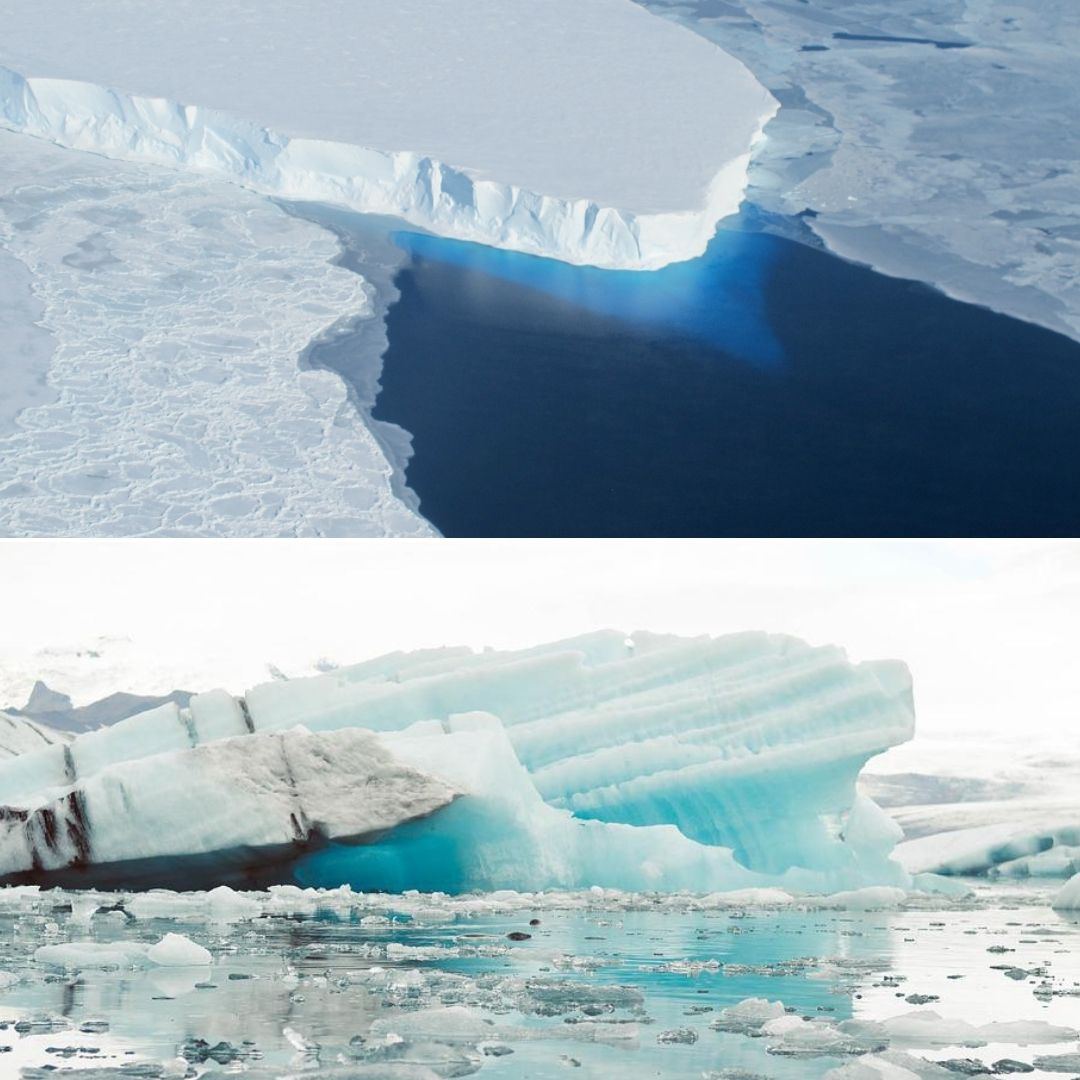Antarctica's 'Doomsday Glacier' On Edge To Create Disaster; Know What Will Happen If It Disintegrates
Writer: Ronit Kumar Singh
A confident and reliable journalist who always desires to toss the unheard voices. I cover politics and governance extensively through stories.
Others/World, 13 Sep 2022 9:41 AM GMT
Editor : Shiva Chaudhary |
A post-graduate in Journalism and Mass Communication with relevant skills, specialising in content editing & writing. I believe in the precise dissemination of information based on facts to the public.
Creatives : Ronit Kumar Singh
A confident and reliable journalist who always desires to toss the unheard voices. I cover politics and governance extensively through stories.
A new study shows that one of the world's biggest glaciers is melting down faster than expected. The Thwaites Glacier is also called Doomsday Glacier because of its alarming threat to the global sea levels.
A glacier in Antarctica is now melting faster than expected by climate experts. A team of scientists, through a study published in Nature Geoscience, suggests that the higher melting rate has occurred over the last six months, resulting in Thwaites Glacier's retreat to 1.3 miles per year.
The current retreat of Thwaites Glacier is twice as expected by scientists in the past decade. It's also called the Doomsday Glaciers because of its high risk to global sea levels. Being the world's largest glacier, accounting for the size of Florida, it has the potential to affect rising sea levels worldwide.
A marine geophysicist, Robert Larter, who co-authored the study, said, "Thwaites is holding on today by its fingernails, and we should expect to see big changes over small time scales in the future - even from one year to the next - once the glacier retreats beyond a shallow ridge in its bed," reported NDTV.
What If It Disintegrates?
A new study has already put the world in an alarming situation about the rapid melting of Doomsday Glacier. The International Thwaites Glacier Collaboration, in a report released in 2020, suggested that if this glacier melts down completely, it will lead to four per cent of the climate change caused by sea level rise.
Furthermore, the rapid disintegration of the glacier would raise the sea levels by 10 feet, posing a threat to the existence of living creatures. A web application developed by the National Oceanic and Atmospheric Administration, named 'Sea Level Rise Viewer,' allows the users to see what the disintegration of Doomsday Glacier would look like.
According to the reports of Sea Level Rise Viewer, the glacier's collapse will become an immediate disaster for southern Mississippi and Louisiana. Its effects would also be seen in almost all parts of the world, especially in Los Angeles and New York.
Netizens Reaction
The rapid melting of Doomsday Glacier has also triggered a discussion among the netizens over climate change and its effects on human existence.
A Twitter user wrote, "California and Texas are begging residents not to run their AC due to excess strain on the power grid. Greenland's glacier is melting. The Arctic Doomsday glacier is hanging on by a thread. Lake Powell and Meade are drying up. Welcome to the beginning of Climate Crisis."
California and Texas are begging residents not to run their AC due to excess strain on the power grid.
— Caucus Characters (@tried_nukin_it) September 7, 2022
Greenland's glacier is melting. The Arctic Doomsday glacier is hanging on by a thread.
Lake Powell and Meade are drying up.
Welcome beginning of to the Climate Crisis.
Another Twitter user wrote, "Heavy rains and floods in Indian subcontinent, European and American heat waves, melting of Antarctica's Doomsday glacier….We're heading towards doomsday, I guess."
Heavy rains and floods in Indian subcontinent, European and American heat waves, melting of Antarctica's Doomsday glacier….
— Sachin Prajapati (@__drsachin) September 10, 2022
We're heading towards doomsday, I guess.
A team of scientists in 2020 found that the warm water flowing across the base of the glacier is causing its disintegration. Following this, a new study released in 2021 showed that the Thwaites Ice Shelf, which helps in keeping the glacier stabilised, could possibly shatter in the coming five years.
Also Read: Cash-Yielding Cultivation: Computer Engineer Turns To Farming In Barren Lands, Earns Huge Profit
 All section
All section















